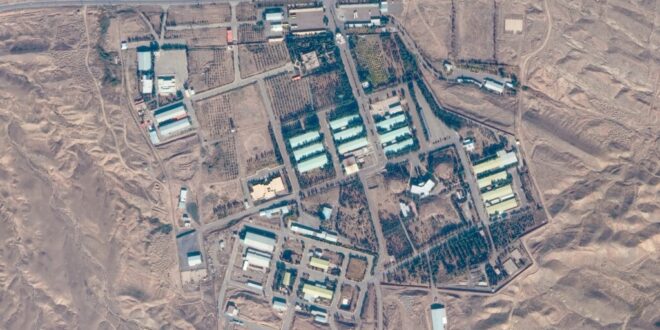Iran was actively conducting research that would support construction of a nuclear device — a process known as weaponization — at a site the Israeli Air Force destroyed during its October 25 counterstrike against the Islamic Republic, an Axios report revealed on November 15. The small building, known as Taleghan 2, was located within Iran’s Parchin military complex.
The United States and Israel have been concerned about renewed Iranian weaponization research activities, which the two allies reportedly began to observe earlier this year. The Axios report suggested that although the United States had warned Iran last June to halt such work — and received assurances that it would — Tehran continued nonetheless. Over the summer, a new assessment by the U.S. Office of the Director of National Intelligence omitted a long-held finding that Iran was not currently conducting weaponization activities.
The Axios report also confirmed that a small group of Iranian scientists carried out activities at Taleghan 2 with limited government knowledge and direction.
Taleghan 2 played a key role in Iran’s past nuclear weapons program
As part of Iran’s pre-2004 nuclear weapons program, the regime undertook key work at Taleghan 2 related to the development of a multi-point initiation system, or MPI. In Iran’s known nuclear weapon design, the MPI sets off a uniform inward explosion, creating a shock wave to compress a uranium core, resulting in a nuclear explosion. Taleghan 2 previously held related equipment, such as a high-explosive test chamber, a Marx generator, and flash X-ray equipment to simulate and photograph the compression of a core.
It is unclear whether Israel targeted Taleghan 2 principally due to renewed MPI work. Another type of ongoing weaponization work may have motivated the strike.
Israel viewed Taleghan 2 as fair game during its counterstrike against Iran
Axios also noted that although Israel heeded a warning from President Joe Biden not to strike Iran’s nuclear facilities in retaliation for Tehran’s October 1 missile attack against the Jewish state, Israel viewed Taleghan 2 as part of Iran’s undeclared nuclear program — activities carried out outside Tehran’s international nonproliferation safeguards — and therefore fair game.
According to Axios, Israel selected the target because “the Iranians wouldn’t be able to acknowledge the significance of the attack without admitting they violated the nuclear non-proliferation treaty,” given both past and alleged ongoing weaponization work there.
Strike signals Israel will disrupt Iranian nuclear weaponization work
As a U.S. official told Axios, “The strike was a not so subtle message that the Israelis have significant insight into the Iranian system even when it comes to things that were kept top secret and known to a very small group of people in the Iranian government.” The U.S. intelligence community has also claimed to have a robust ability to detect Iranian weaponization work.
Israel’s willingness to strike Taleghan 2 indicates that more such strikes may be forthcoming, along with covert sabotage efforts, should Iran continue work on nuclear weapons. Tehran’s air defenses were decimated by Israel’s strikes in October, providing Jerusalem with an opportunity to target additional weaponization facilities with limited Iranian interference.
 Eurasia Press & News
Eurasia Press & News



